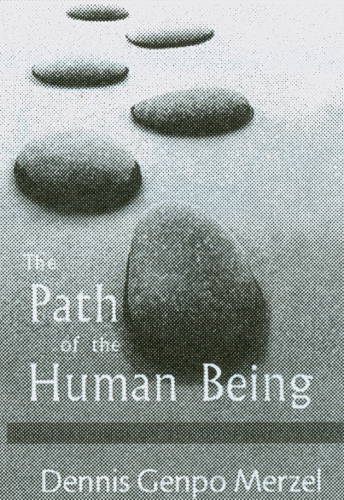 In these uncertain times, there is a call for teachings that are grounded in tradition yet relevant to daily life. Happily, a number of experienced teachers are responding. The Path of the Human Being: Zen Teachings on the Bodhisattva Way (Shambhala, August, $21.95, cloth) is a deftly edited collection of dharma talks by Zen master Dennis Genpo Merzel, abbot of Kanzeon Zen Center in Salt Lake City. Genpo Roshi emphasizes that awakening is practical above all, enabling us “to choose to live in the world as it is.”
In these uncertain times, there is a call for teachings that are grounded in tradition yet relevant to daily life. Happily, a number of experienced teachers are responding. The Path of the Human Being: Zen Teachings on the Bodhisattva Way (Shambhala, August, $21.95, cloth) is a deftly edited collection of dharma talks by Zen master Dennis Genpo Merzel, abbot of Kanzeon Zen Center in Salt Lake City. Genpo Roshi emphasizes that awakening is practical above all, enabling us “to choose to live in the world as it is.”
A dharma heir to Maezumi Roshi, Genpo espouses Soto Zen’s gradualist path, viewing Zen practice as a spiral: Through meditation we connect with our limitless nature, so that when we “find ourselves back where we started, in our limited, ego-centered mind,” we know the truth lies elsewhere. Each time we spiral back, attachment to the “small self” lessens. Merzel has sanghas throughout the U.S. and Europe, and it is easy to see how reassuring his presence must be to new and experienced practitioners alike. This is no-nonsense dharma: “The Zen approach of embracing ourselves relies on the same wisdom that forest-fire fighters discovered years ago: fight fire with fire.” No practice-oriented book today is complete without advice for troubled times, and Merzel obliges. Crisis is a bodhisattva’s opportunity, he points out: “Give all your merit away as fast as you can offer it.”
In Living Kindness: The Buddha’s Ten Guiding Principles for a Blessed Life (Inner Ocean, September, $15.00, paper), former monk Donald Altman offers up the ten Paramitas, or “perfections,” as a recipe for creating a more compassionate world by transforming it from the inside out. This modern iteration of the Paramitas holds, for example, that practicing generosity is the way to ensure we’ll have ample material resources, and that patience will assure us good health and supportive companions.
Patience is what we need most for facing loss, Lama Surya Das suggests in Letting Go of the Person You Used to Be: Buddhist Lessons on Change, Loss, and Spiritual Transformation (Broadway Books, August, $25.00, cloth), a compendium of teachings and practices for dealing with life’s biggest challenges (see excerpt, page 82).
First-time author Khandro Rinpoche is one of the new generation of Tibetan Buddhist teachers equally versed in traditional teachings (in her case, the Kagyu and Nyingma schools) and contemporary culture. In This Precious Life: Tibetan Buddhist Teachings on the Path to Enlightenment (Shambhala, August, $21.95, cloth), Khandro uses the framework of the Four Reminders—the preciousness of human existence, impermanence, suffering, and karma—to show how we can create true happiness for ourselves and others. Teachings like the Eight Freedoms, the Ten Endowments, and The Seven Benefits of Taking Refuge come to life in her lucid prose. Contemplative exercises allow us to relate the teachings to our own experience. Basic meditation instructions and a glossary of terms help make this an invaluable introduction to Buddhist practice.
A good book to slip into your teenager’s backpack is Wide Awake: A Buddhist Guide for Teens (Perigee, August, $13.95, paper). Author Diana Winston, a peace activist and meditation teacher who was a Buddhist nun in Burma, is close enough to her own teen years to empathize, but this intelligent, meaty handbook would be welcome at any age. Who wouldn’t want to learn how Buddhist practice helps us address issues like belonging, purpose, and meaning – not to mention sex, drugs, gossip, and doing something useful in the world? Noah Levine (see “Shouts and Whispers,”) writes in the introduction, “This book shines the light of wisdom into the sometimes dark experience of being young.”
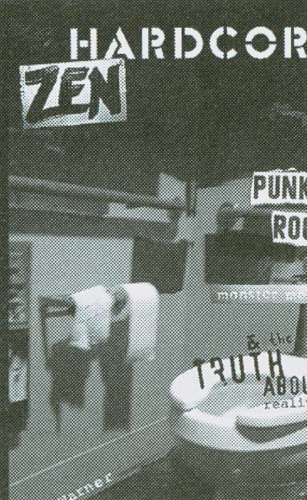 Then there’s Brad Warner. Ex-bass player in the punk rock bands Zero Defex, and Dimentia 13, and now a star of Japanese monster flicks, he’s also an ordained Zen priest who teaches and leads retreats in Tokyo. Hardcore Zen: Punk Rock, Monster Movies, and the Truth About Reality (Wisdom, September, $14.95, paper) is Zen for the South Park set: subversive, shit-stick dharma liberally laced with scenes from Warner’s life. Despite his assertion that “autobiographies suck,” Warner’s path from inner anarchy to the Heart Sutra (“profoundly rocked my mental world”) and a Japanese Zen master who moonlights for a cosmetics firm will no doubt resonate with many twenty- and thirty-somethings. Chapter headings hint at Warner’s spin on the teachings: “No Sex with Cantaloupes” deals with the precepts; “Revenge of the Pod People” with sangha; “Pass Me the Ecstasy” with why drugs aren’t the Way. Hardcore Zen isBe Here Now for now. We hear echoes of those who went East a generation—or two—ago in Warner’s words: “I knew there had to be some way to see the truth which didn’t involve following all the other cattle to the slaughterhouse.”
Then there’s Brad Warner. Ex-bass player in the punk rock bands Zero Defex, and Dimentia 13, and now a star of Japanese monster flicks, he’s also an ordained Zen priest who teaches and leads retreats in Tokyo. Hardcore Zen: Punk Rock, Monster Movies, and the Truth About Reality (Wisdom, September, $14.95, paper) is Zen for the South Park set: subversive, shit-stick dharma liberally laced with scenes from Warner’s life. Despite his assertion that “autobiographies suck,” Warner’s path from inner anarchy to the Heart Sutra (“profoundly rocked my mental world”) and a Japanese Zen master who moonlights for a cosmetics firm will no doubt resonate with many twenty- and thirty-somethings. Chapter headings hint at Warner’s spin on the teachings: “No Sex with Cantaloupes” deals with the precepts; “Revenge of the Pod People” with sangha; “Pass Me the Ecstasy” with why drugs aren’t the Way. Hardcore Zen isBe Here Now for now. We hear echoes of those who went East a generation—or two—ago in Warner’s words: “I knew there had to be some way to see the truth which didn’t involve following all the other cattle to the slaughterhouse.”
Zen has a legacy of mavericks. Sokei-an Sasaki, the first Zen master to put down roots in America, is all but forgotten today—a pity, since his story is such a rich one. Holding the Lotus to the Rock: The Autobiography of Sokei-an, America’s first Zen Master(Four Walls Eight Windows, 2002, $24.95, cloth) finally gives us a look at this erudite, charming teacher (“a dazzling storyteller,” the book’s editor, Ed Hotz, tells us), through his own writings and the recollections of poet Gary Snyder and students like Mary Farkas and writer Ruth Fuller Sasaki, who married Sokei-an shortly before his death in 1945.
Arriving in America in 1906 with his teacher (who soon returned to Japan), Sokei-an wandered the West, working odd jobs and meditating on the Five Skandhas, or “aggregates” (form, sensation, perception, thought, consciousness), a practice he continued for twelve years. “I understood Zen through contemplation of the Five Skandhas,” he later said. Moving to New York in 1916, he settled in Greenwich Village, and over the next thirty years wrote poetry, painted, sculpted, and worked as a journalist, all the while translating texts and teaching zazen and koan study. Interned on Ellis Island during World War II, Sokei-an lamented, “My heart is bruised.”
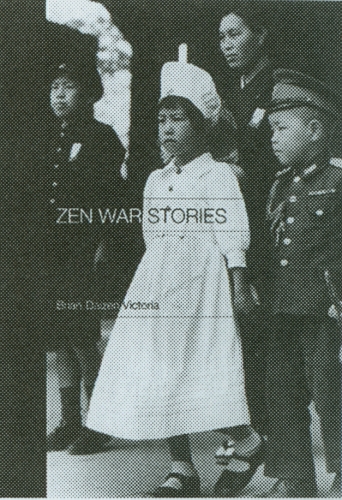 Meanwhile, in Japan, the Buddhist establishment was more gung-ho on the war. In Zen War Stories (RoutledgeCurzon, 2003, $27.95, paper), Brian Daizen Victoria expands on his acclaimed—and controversial—1997 book, Zen at War, which revealed the militant spirit of certain Japanese Zen masters during World War II. In the current book, Victoria broadens his inquiry to show how institutional Buddhism “was used to legitimate Japanese militarism.” From his observations, we see how basic Buddhist principles—nonjudgment, self-forgetting, one mind—can be subverted for patriotic ends.
Meanwhile, in Japan, the Buddhist establishment was more gung-ho on the war. In Zen War Stories (RoutledgeCurzon, 2003, $27.95, paper), Brian Daizen Victoria expands on his acclaimed—and controversial—1997 book, Zen at War, which revealed the militant spirit of certain Japanese Zen masters during World War II. In the current book, Victoria broadens his inquiry to show how institutional Buddhism “was used to legitimate Japanese militarism.” From his observations, we see how basic Buddhist principles—nonjudgment, self-forgetting, one mind—can be subverted for patriotic ends.
Buddhism in wartime is also the subject of The Lotus Unleashed: The Buddhist Peace Movement in South Vietnam, 1964-1966 (University Press of Kentucky, 2002, $35.00, cloth). Historian Robert J. Topmiller explores Buddhist-led agitation to replace the pro-American regime with a civilian government, and halt the war. The author sums up the tenor of those years with a quote from veteran journalist Henry Kamm: “Vietnam was not a land for pacifists.”
Zen monk Thich Nhat Hanh, a leader of the pro-peace “Third Force” at that time, fled Vietnam in 1966 after an attempt on his life, and has remained a tireless peacemaker ever since.Creating True Peace: Ending Violence in Yourself, Your Family, Your Community, and the World (Free Press, August, $23.00, cloth) is his latest manual for practicing nonviolence. Thấy (“teacher” in Vietnamese) encourages us to draft “a personal peace treaty” demonstrating our commitment to “protect ourselves from negative thinking and to nourish lovingkindness.” The book includes meditations for cultivating compassion and fostering peace and reconciliation on a personal and global level.
“In my true home I have no fear, no anxiety. I have peace and liberation,” Thich Nhat Hanh writes in I Have Arrived, I Am Home: Celebrating Twenty Years of Plum Village Life (Parallax Press, 2003, $25.00, paper). Charmingly described as a “tea table book,” this is a family album of sorts, put together by Thấy “and the Global Plum Village Family” to mark the anniversary of his retreat center in southern France. Illustrated with dozens of snapshots, the book packs in stories, songs, poems, and reflections on mindfulness and communal living, contributed by Thấy and assorted war veterans, prisoners, social workers, monks, nuns, and other sangha members. Coming home is, of course, a classic metaphor for awakening to what—and where—we already are. “I have stopped wandering,” Thấy writes. “I have arrived. This is the teaching and practice of Plum Village.”
The desire to “stop wandering” brings many people to meditation. Tricycle contributing editor Mark Magill’s graceful book, Why is the Buddha Smiling? Mindfulness as a Means of Bringing Calm and Insight to Your Life (Fair Winds Press, August, $18.95, cloth), sets out teachings and practices that lead to inner freedom—and an answer to the question posed in the title.
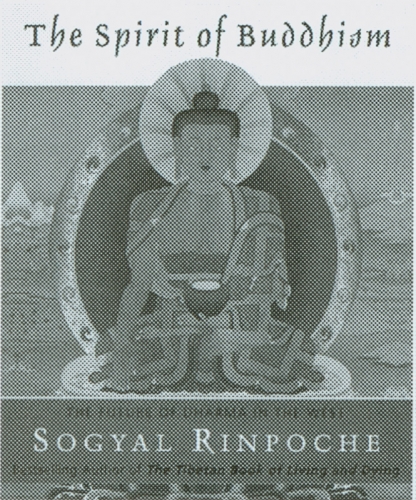 There is an underlying question in Sogyal Rinpoche’s The Spirit of Buddhism: The Future of Dharma in the West (HarperSanFrancisco, 2003, $15.95, cloth), and the answer seems to be yes. Sogyal draws a parallel between the state of the dharma in the West today and the spiritual renaissance fostered by the nonsectarian Rimé movement in nineteenth-century Tibet. As he sees it, the future of Buddhist practice in the West is rosy, provided there is a commitment to fostering openness between traditions, deepening the teachings, “maintaining the purity of the lineage,” and strengthening the dharma community.
There is an underlying question in Sogyal Rinpoche’s The Spirit of Buddhism: The Future of Dharma in the West (HarperSanFrancisco, 2003, $15.95, cloth), and the answer seems to be yes. Sogyal draws a parallel between the state of the dharma in the West today and the spiritual renaissance fostered by the nonsectarian Rimé movement in nineteenth-century Tibet. As he sees it, the future of Buddhist practice in the West is rosy, provided there is a commitment to fostering openness between traditions, deepening the teachings, “maintaining the purity of the lineage,” and strengthening the dharma community.
Dzogchen (“the Great Perfection”), a form of Tibetan Buddhist practice seen as the pinnacle of realization, was long considered too advanced for Westerners. Now it is widely taught in the West, and fast becoming fashionable. In Beyond Words: Dzogchen Made Simple(Element, 2003, $22.95, cloth), Judith Allan and Julia Lawless, longtime students of Tibetan master Chögyal Namkhai Norbu, undertake the not-so-simple task of making this ancient hidden teaching accessible.
Dzogchen, in one sense, refers to the realization of one’s basic nature, the nondual perfected state, so even talking about it puts us at risk of dumbing down what words can’t explain. On the other hand, Namkhai Norbu’s foreword is, in itself, a demonstration of a clear mind at work. The authors go on to give us an overview of the teachings and the role of the teacher; introduce us to early Dzogchen masters; and explain fundamental practices (pointing-out; sky meditation) as well as more advanced forms, like dream yoga and attaining the “rainbow body.”
Tricycle contributing editor Carole Tonkinson edited the book, which tackles the issue of what will happen to Dzogchen as interest spreads. The authors stress the need to preserve the integrity of the teachings and the purity of their transmission, but they are no more successful than the next person at predicting the future of Dzogchen in the maw of the all-consuming West.
Roaring Silence: Discovering the Mind of Dzogchen (Shambhala, 2002, $16.95, paper) offers another perspective on Dzogchen teachings, this from Ngakpa Chögyam and Khandro Dechen, Western-born lamas in the Nyingma tradition. Aimed at a more experienced practitioner, the text contains meditations, visualizations, and vajra postures. The authors perform an invaluable service by including questions-and-answers with various Tibetan Buddhist teachers, who supply guidance on the subtleties of Dzogchen practice.
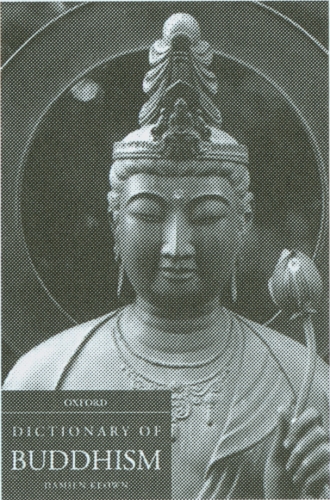
Finally, don’t miss this addition to the research shelf: Oxford’s Dictionary of Buddhism (Oxford University Press, 2003, $35.00, cloth). The 2,000-plus entries include interesting surprises: Check out the full-page entry on “stem cell research,” considered in light of Buddhist ethics.
Reading List for the Dalai Lama’s visit
If you want to bone up for the Dalai Lama’s teachings before his U.S. tour this September (seewww.savetibet.org for his schedule), here is some recommended reading. The Art of Happiness at Work (Riverhead, August, $24.95, cloth) gives a taste of His Holiness’s everyday wisdom, in dialogues with psychiatrist Howard Cutler.
The Path to Bliss: A Practical Guide to Stages of Meditation (Snow Lion, 2003, $16.95, paper) contains traditional lamrim (“stages of the path”) teachings, introduced in the eleventh century by Atisha, an Indian monk.
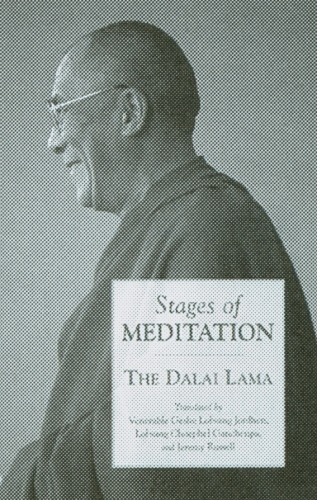 For background reading for the Mind and Life Conference XI, “Investigating the Mind” (Cambridge, Massachusetts, September 13�14), a dialogue with scientists and academics on attention and cognitive control, see Choosing Reality: A Buddhist View of Physics and the Mind by B. Alan Wallace (Snow Lion, September, $16.95, paper). The book provides an update of Wallace’s analysis of the interface between Buddhism and science. A scholar and former Buddhist monk, he is copresenting with His Holiness at the Mind and Life conference. Stages of Meditation, a root text by Kamalashila; translated by Venerable Geshe Lobsang Jordhen, Losang Choephel Ganchenpa, and Jeremy Russell (Snow Lion, August, $16.95, paper), offers the Dalai Lama’s teachings on a ninth-century mind-training handbook he has called “a key that opens the door to all other major Buddhist scriptures.”
For background reading for the Mind and Life Conference XI, “Investigating the Mind” (Cambridge, Massachusetts, September 13�14), a dialogue with scientists and academics on attention and cognitive control, see Choosing Reality: A Buddhist View of Physics and the Mind by B. Alan Wallace (Snow Lion, September, $16.95, paper). The book provides an update of Wallace’s analysis of the interface between Buddhism and science. A scholar and former Buddhist monk, he is copresenting with His Holiness at the Mind and Life conference. Stages of Meditation, a root text by Kamalashila; translated by Venerable Geshe Lobsang Jordhen, Losang Choephel Ganchenpa, and Jeremy Russell (Snow Lion, August, $16.95, paper), offers the Dalai Lama’s teachings on a ninth-century mind-training handbook he has called “a key that opens the door to all other major Buddhist scriptures.”
For teachings on Geshe Chekawa’s Seven-Point Mind Training and on the Root Verses on Indian Philosophies (which the Dalai Lama will discuss at the Beacon Theater in New York City, September 17-20) here are two texts: Buddhism with an Attitude: The Tibetan Seven-Point Mind Training by B. Alan Wallace (Snow Lion, September, $16.95, paper), is an accessible guide to the Tibetan Buddhist practice of lojong, or attitude training, first set down by Geshe Chekawa in the eleventh century. Buddhist Philosophy: Losang Gonchok’s Short Commentary to Jamyang Shayba’s Root Text on Tenets by Daniel Cozort and Craig Preston (Snow Lion, September, $16.95, paper) provides Buddhist and non-Buddhist views on the nature of reality, as set out by seventeenth-century Tibetan scholar Jamyang Shayba.
Cultivating Compassion
Practices for raising compassion have special resonance these days. Becoming the Compassion Buddha: Tantric Mahamudra in Everyday Life (Wisdom, 2003, $14.95, paper) is edited from the late Lama Thubten Yeshe’s teachings on a commentary the Dalai Lama wrote at age 19, on a practice called “The Inseparability of the Guru and Avalokiteshvara: A Source of All Powerful Attainments.” In this practice, the deity is visualized in the form of one’s guru. His Holiness is regarded as the manifestation of Avalokiteshvara, so visualizing him as the deity isn’t a stretch. The benefit, Lama Yeshe explains, is that in seeing the guru as inseparable from the compassion and wisdom of Avalokiteshvara, “you start to see the inseparability of these qualities and yourself.” This is the first volume in a Wisdom series on tantric deity practices in the Tibetan Buddhist tradition.
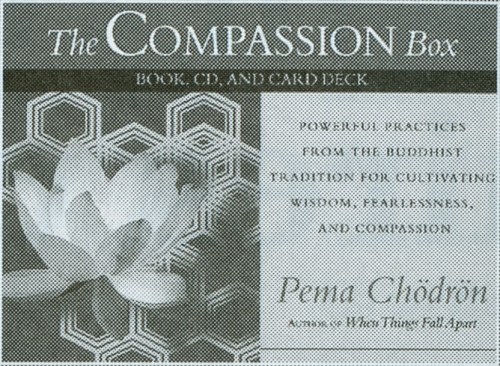 The Compassion Box (Shambhala, September, $26.95) is Pema Chödrön’s toolkit for learning Tibetan Buddhist practices for compassion and equanimity.Lojong, as taught in the Shambhala tradition, uses pithy slogans to dissolve self-centeredness and unkindness. The kit includes a deck of fifty-nine cards, each with a maxim on the front—”Examine the nature of unborn awareness”; “Be grateful to everyone”; “Don’t wait in ambush”—and, on the back, a commentary. The accompanying book, Start Where You Are: A Guide to Compassionate Living, provides help in understanding and applying the slogans. The third tool is a 45-minute audio CD of Pema’s instructions on tonglen, a meditation practice for opening the heart.
The Compassion Box (Shambhala, September, $26.95) is Pema Chödrön’s toolkit for learning Tibetan Buddhist practices for compassion and equanimity.Lojong, as taught in the Shambhala tradition, uses pithy slogans to dissolve self-centeredness and unkindness. The kit includes a deck of fifty-nine cards, each with a maxim on the front—”Examine the nature of unborn awareness”; “Be grateful to everyone”; “Don’t wait in ambush”—and, on the back, a commentary. The accompanying book, Start Where You Are: A Guide to Compassionate Living, provides help in understanding and applying the slogans. The third tool is a 45-minute audio CD of Pema’s instructions on tonglen, a meditation practice for opening the heart.
Perhaps the most intimate and intense practice of compassion is being present with someone who is dying. But how do we prepare for that? Being a Compassionate Companion: Teachings, Stories, and Practical Wisdom for Those Accompanying Someone Who Is Dying (3 CD-set, 3 hours, $26.95), speaks to our questions and concerns about serving the dying and walking “the landscape of grief.” Our guide is Frank Ostaseski, founder of the Zen Hospice Project, the first Buddhist hospice in America. Order from the Zen Hospice Project, www.zenhospice.org.
Thank you for subscribing to Tricycle! As a nonprofit, we depend on readers like you to keep Buddhist teachings and practices widely available.